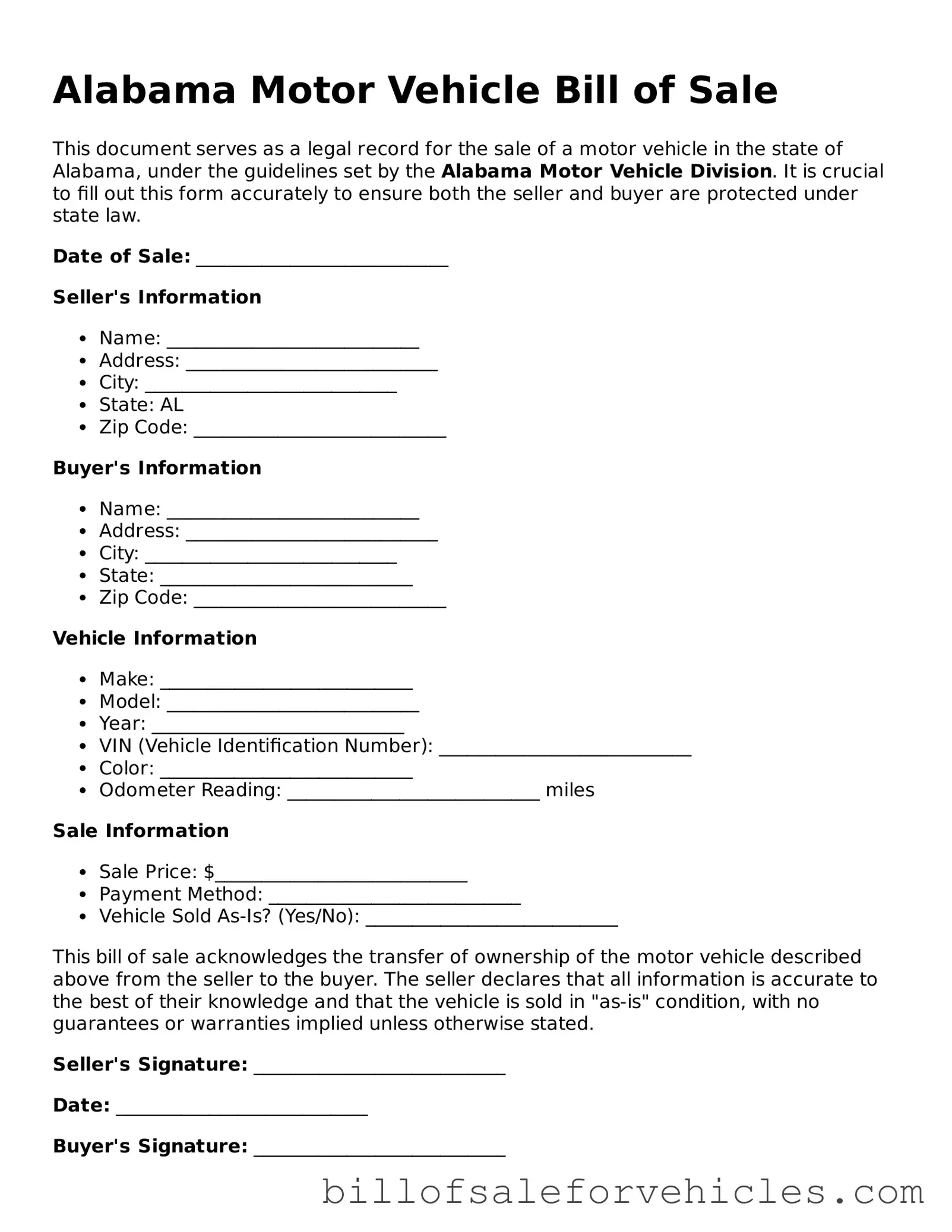What is an Alabama Motor Vehicle Bill of Sale form?
The Alabama Motor Vehicle Bill of Sale form is a legal document used to record the sale and purchase of a motor vehicle in the state of Alabama. It serves as proof of transfer of ownership from the seller to the buyer. This document typically includes details such as the make, model, year, VIN (Vehicle Identification Number), and the agreed-upon sale price of the vehicle.
Is the Alabama Motor Vehicle Bill of Sale form required for registering a vehicle?
Yes, in Alabama, the Motor Vehicle Bill of Sale form is often required for registering a vehicle. It is one of the documents that the Department of Motor Vehicles (DMV) may request as proof of ownership. Additionally, it might be needed to show the transaction's date and the vehicle's sale price for taxation purposes.
What information should be included in the Alabama Motor Vehicle Bill of Sale form?
An Alabama Motor Vehicle Bill of Sale form should include the names and addresses of both the seller and the buyer, a detailed description of the vehicle (including make, model, year, and VIN), the sale price, the date of sale, and statements regarding the vehicle's warranty status. Both parties should sign and date the document, possibly in the presence of a notary, depending on local requirements.
Do both the buyer and the seller need to sign the Alabama Motor Vehicle Bill of Sale form?
Yes, both the buyer and the seller are required to sign the Alabama Motor Vehicle Bill of Sale form. Their signatures confirm that they agree to the terms of the sale, and they acknowledge the accurate representation of the vehicle being sold. It is also recommended to have the signatures notarized to authenticate the document further and prevent potential issues in the future.
Can I use a generic Bill of Sale form for selling a motor vehicle in Alabama?
While a generic Bill of Sale form can be used for selling a motor vehicle in Alabama, it is advisable to use a form specifically designed for Alabama. This ensures that the form meets all local legal requirements and includes all necessary information specific to the state's DMV guidelines for vehicle registration and sales transactions.
